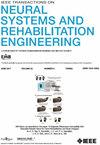A Multi-Level Integrated EEG-Channel Selection Method Based on the Lateralization Index
IF 4.8
2区 医学
Q2 ENGINEERING, BIOMEDICAL
IEEE Transactions on Neural Systems and Rehabilitation Engineering
Pub Date : 2025-04-22
DOI:10.1109/TNSRE.2025.3563416
引用次数: 0
Abstract
The importance of optimizing channel selection for portable brain-computer interface (BCI) technology is increasingly recognized. Effective channel selection reduces computational load and enhances user experience by making BCI systems more comfortable and easier to use. A significant challenge lies in reducing the number of electrodes without compromising decoding accuracy. Although some methods have been proposed in previous studies, these often increase computational load and overlook the importance of channel selection across different subjects. Therefore, we propose a novel Multi-level Integrated EEG-Channel Selection method based on the Lateralization Index (MLI-ECS-LI). This method leverages the lateralization index in selecting important channels and can achieve the channel selection for the cross-tasks and the cross-subjects scenarios. To evaluate the effectiveness of the proposed method, the time and frequency domain features from selected channels were extracted. Three widely used classifiers, Least Squares Support Vector Machine (LSSVM), Random Forest (RF), and Support Vector Machine (SVM) were used to classify movement types based on these features. Compared to the conventional condition (C1-C6), the average decoding accuracies across 21 healthy subjects demonstrated an improved performance of 6.6%, 4.9%, 6.9% (LSSVM); 3.8%, 2.8%, 4.5%(RF); and 7.6%, 5.6%, 9.2%(SVM) via using the channels selected from the conditions of the single task, the cross-tasks, and the cross-subjects scenarios, respectively. These results demonstrated the potential of the proposed method in improving the utility of the portable Motor Imagery Brain-Computer Interface (MI-BCI) and effectiveness in practical applications.一种基于侧化指数的多层集成eeg信道选择方法
优化信道选择对于便携式脑机接口(BCI)技术的重要性日益被人们所认识。有效的信道选择减少了计算负荷,并通过使BCI系统更舒适和更容易使用来增强用户体验。一个重要的挑战在于在不影响解码精度的情况下减少电极的数量。虽然在以前的研究中提出了一些方法,但这些方法往往增加了计算负荷,并且忽略了不同科目之间信道选择的重要性。为此,我们提出了一种基于侧化指数(MLI-ECS-LI)的多层集成脑电信号通道选择方法。该方法利用侧化指数选择重要信道,可以实现跨任务、跨学科场景下的信道选择。为了评估该方法的有效性,提取了所选信道的时域和频域特征。使用最小二乘支持向量机(LSSVM)、随机森林(RF)和支持向量机(SVM)三种常用的分类器对基于这些特征的运动类型进行分类。与常规条件(C1-C6)相比,21名健康受试者的平均解码准确率分别提高了6.6%、4.9%和6.9% (LSSVM);3.8%, 2.8%, 4.5%(rf);分别使用单任务、跨任务和跨主题场景条件选择的通道,分别获得7.6%、5.6%、9.2%(支持向量机)。这些结果证明了所提出的方法在提高便携式运动图像脑机接口(MI-BCI)的实用性和实际应用中的有效性方面的潜力。
本文章由计算机程序翻译,如有差异,请以英文原文为准。
求助全文
约1分钟内获得全文
求助全文
来源期刊
CiteScore
8.60
自引率
8.20%
发文量
479
审稿时长
6-12 weeks
期刊介绍:
Rehabilitative and neural aspects of biomedical engineering, including functional electrical stimulation, acoustic dynamics, human performance measurement and analysis, nerve stimulation, electromyography, motor control and stimulation; and hardware and software applications for rehabilitation engineering and assistive devices.

 求助内容:
求助内容: 应助结果提醒方式:
应助结果提醒方式:


